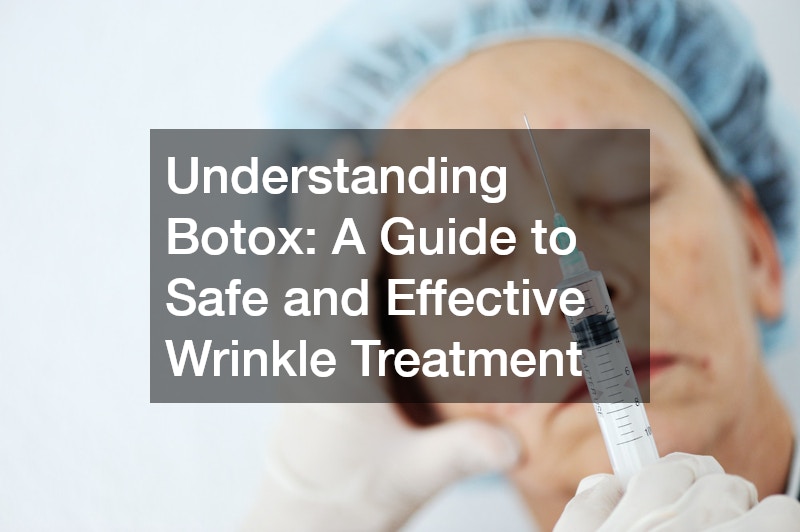Botox has become a household name for non-surgical wrinkle treatment. This popular cosmetic procedure is renowned for its ability to smooth out fine lines and give the skin a youthful appearance. But what exactly is Botox, and how can you ensure you receive a safe and effective treatment? This guide will provide you with a comprehensive understanding of Botox, including its uses, the procedure, and tips for choosing the right provider.
What is Botox? Botox is a neurotoxin derived from the bacterium Clostridium botulinum. When used in small, controlled doses, it works by temporarily blocking nerve signals to the muscles where it is injected.
This paralysis prevents the muscles from contracting, which helps smooth out wrinkles and fine lines typically caused by repetitive facial expressions. Botox is most commonly used to treat dynamic wrinkles, such as those found on the forehead, between the eyebrows (frown lines), and around the eyes (crow’s feet).
The Botox Procedure The Botox procedure begins with a consultation with a qualified physician, often a board-certified plastic surgeon or dermatologist. During this consultation, you will complete a medical history form, discuss your aesthetic goals, and undergo a physical examination to determine the most appropriate treatment plan. The physician will review your medications and check for allergies to ensure a safe procedure.
Before the injections, a numbing cream may be applied to the treatment areas to minimize discomfort. Botox is injected using a fine needle into specific facial muscles. The injections are typically administered in multiple small doses, targeting areas of concern. For example, if you are treating frown lines, the injections will be placed in the muscles between your eyebrows.
The procedure usually takes about 15 to 30 minutes, depending on the number of areas being treated. After the injections, ice may be applied to reduce swelling and bruising. Patients can usually resume their normal activities immediately, though it is advisable to avoid strenuous exercise and lying flat for a few hours post-treatment.
Ensuring Safe and Effective Treatment To ensure a successful Botox treatment, choosing a qualified and experienced provider is crucial. Look for practitioners certified by reputable boards, such as the American Board of Plastic Surgery or the American Academy of Dermatology. This certification ensures that the provider has the necessary training and experience to administer Botox safely.
Additionally, ask about the provider’s experience with Botox and request to see before-and-after photos of previous patients. This will give you an idea of their skill level and the potential results you can expect. It is also important to discuss any concerns or questions about the procedure to ensure you are comfortable and fully informed.
Post-Treatment Care After receiving Botox, you may experience mild redness, swelling, or bruising at the injection sites. These effects are typically temporary and should subside within a few days. To maximize your results, follow your provider’s aftercare instructions, including avoiding direct sunlight, refraining from rubbing or massaging the treated areas, and staying hydrated.
Botox results usually become visible within a few days and can last three to six months, depending on individual factors and the areas treated. Regular follow-up treatments can help maintain the smooth and youthful appearance achieved with Botox.
In conclusion, Botox is a safe and effective option for reducing the appearance of wrinkles and achieving a refreshed look. By understanding the procedure and choosing a qualified provider, you can ensure that your Botox treatment is both successful and satisfying.
.







